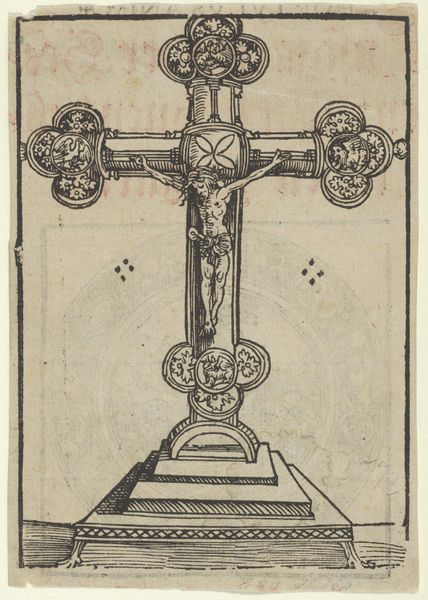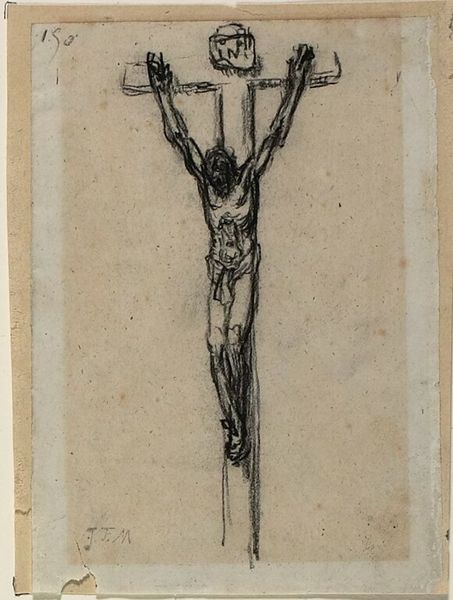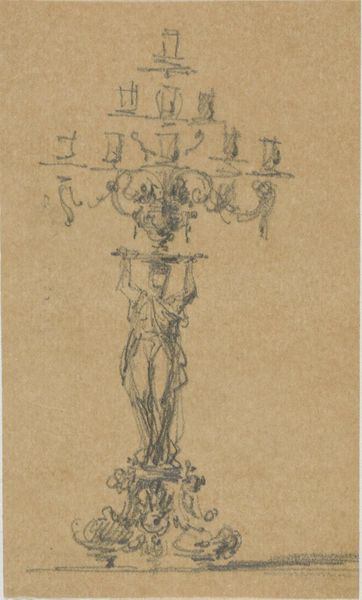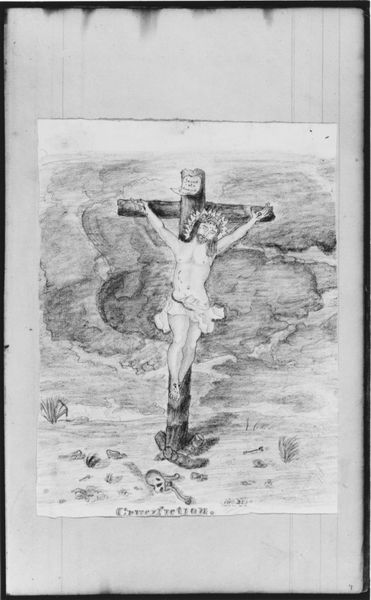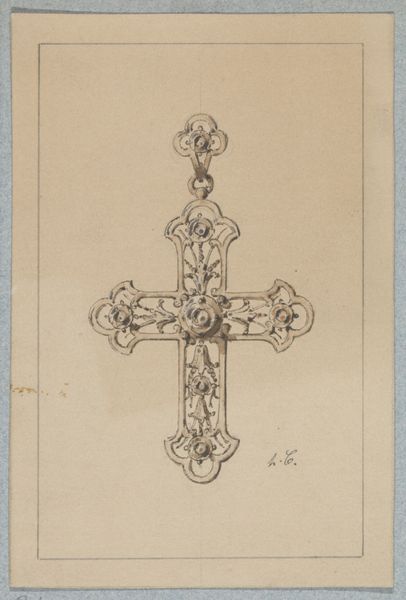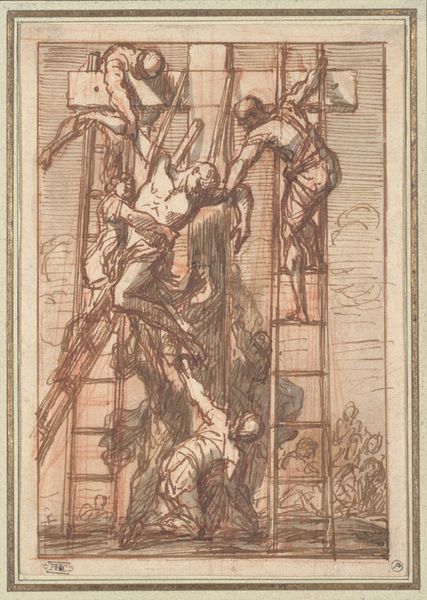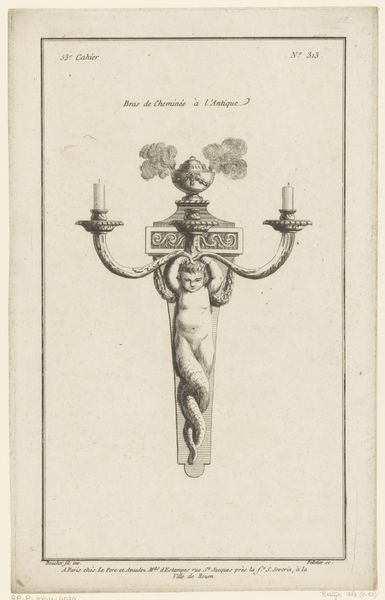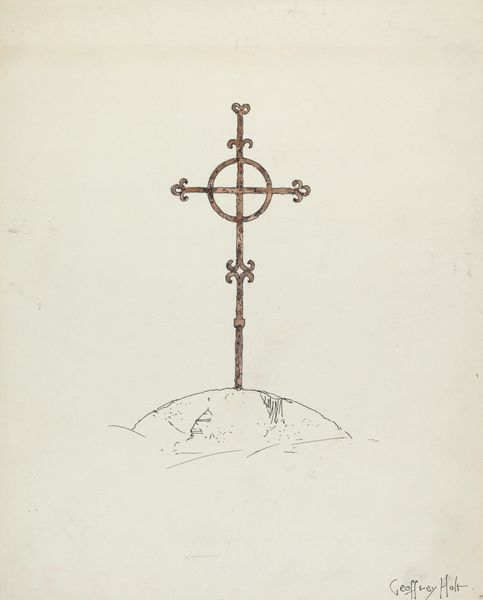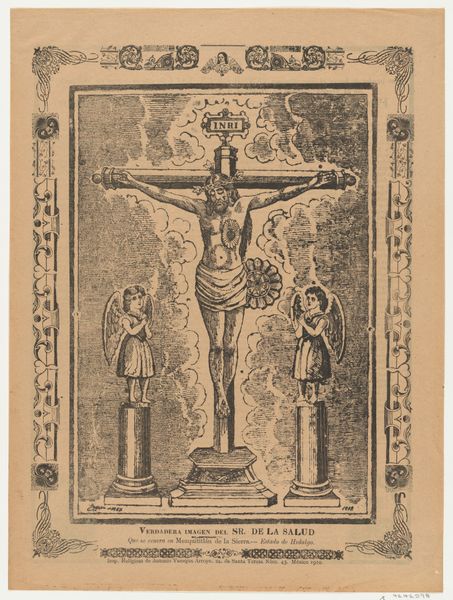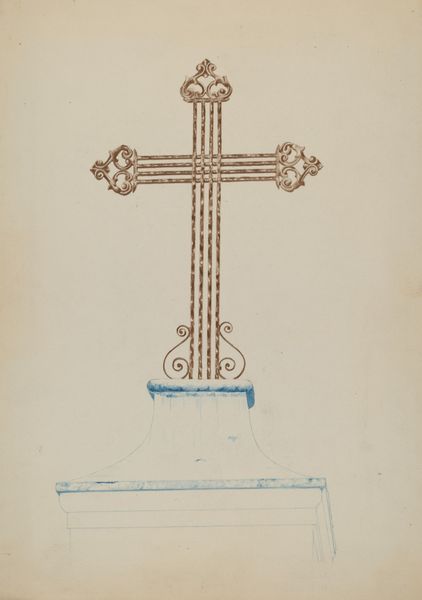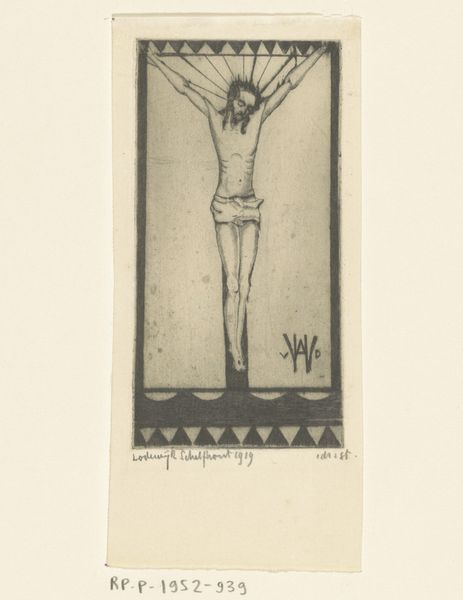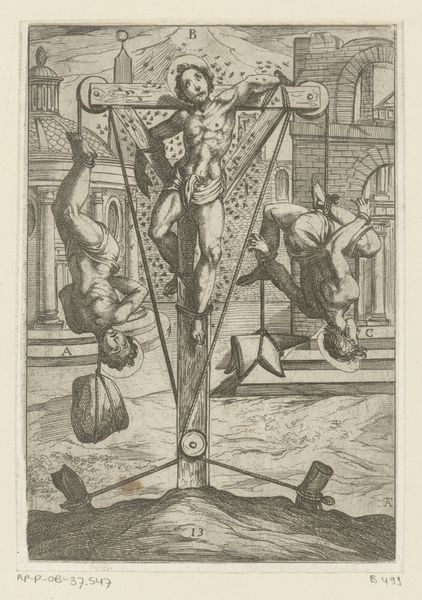
drawing, ink
#
drawing
#
landscape
#
figuration
#
ink
#
history-painting
Dimensions: 72 mm (height) x 52 mm (width) (bladmaal)
Curator: So, here we have Martinus Rørbye's "Christ on the Cross", an ink and drawing created around 1847. What grabs you when you look at it? Editor: Its intimacy. It feels less like a grand religious statement and more like a whispered confession, a fleeting vision sketched in a notebook. The raw simplicity has a certain…vulnerability. Curator: Absolutely. Rørbye, you know, was fascinated by light and atmosphere, even in what would seem like a deeply historical scene. And ink as his chosen medium adds that rawness, like he's capturing something raw. Editor: It’s fascinating how he places Christ not against the darkness we often expect, but within a landscape. Notice that faint horizon. It’s almost as if the crucifixion is absorbed back into nature. Are there any details that Rørbye has emphasized in his drawing of Christ's crucifixion to focus on that really move the scene for the observer. Curator: Consider those strokes and that one little patch of scribble at the foot of the cross -- maybe an abbreviation of his pain; almost as if Christ has the Earth bearing witness to it with hills standing silently in that desolate space.. Editor: So much religious art aims for transcendence, and look how very much is brought down. Yet at the same time, doesn’t the cross itself become a stark, upright symbol, piercing that landscape as a signal and focal point of grief that anchors the tragedy into something inevitable? Curator: It does. And perhaps that simple presentation, stripped of the dramatic flair, ironically reinforces its power, or offers Rørbye some chance to process what faith even means. Editor: It almost serves as an acknowledgement. Yes it has happened and forever changed the world! A moment's contemplation sketched on paper now frozen in our memory, just like grief.
Comments
No comments
Be the first to comment and join the conversation on the ultimate creative platform.
